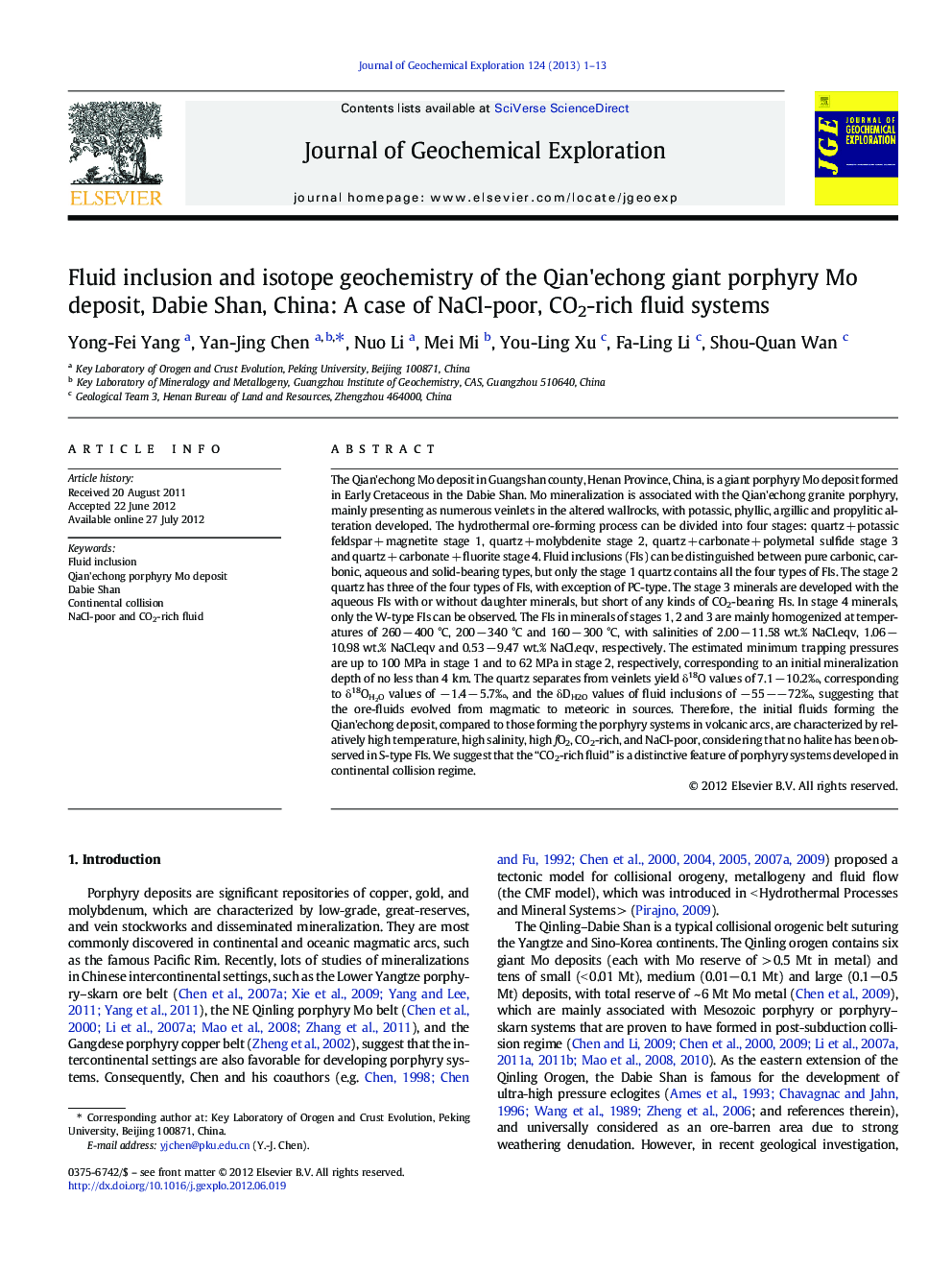| کد مقاله | کد نشریه | سال انتشار | مقاله انگلیسی | نسخه تمام متن |
|---|---|---|---|---|
| 4457676 | 1620932 | 2013 | 13 صفحه PDF | دانلود رایگان |

The Qian'echong Mo deposit in Guangshan county, Henan Province, China, is a giant porphyry Mo deposit formed in Early Cretaceous in the Dabie Shan. Mo mineralization is associated with the Qian'echong granite porphyry, mainly presenting as numerous veinlets in the altered wallrocks, with potassic, phyllic, argillic and propylitic alteration developed. The hydrothermal ore-forming process can be divided into four stages: quartz + potassic feldspar + magnetite stage 1, quartz + molybdenite stage 2, quartz + carbonate + polymetal sulfide stage 3 and quartz + carbonate + fluorite stage 4. Fluid inclusions (FIs) can be distinguished between pure carbonic, carbonic, aqueous and solid-bearing types, but only the stage 1 quartz contains all the four types of FIs. The stage 2 quartz has three of the four types of FIs, with exception of PC-type. The stage 3 minerals are developed with the aqueous FIs with or without daughter minerals, but short of any kinds of CO2-bearing FIs. In stage 4 minerals, only the W-type FIs can be observed. The FIs in minerals of stages 1, 2 and 3 are mainly homogenized at temperatures of 260 − 400 °C, 200 − 340 °C and 160 − 300 °C, with salinities of 2.00 − 11.58 wt.% NaCl.eqv, 1.06 − 10.98 wt.% NaCl.eqv and 0.53 − 9.47 wt.% NaCl.eqv, respectively. The estimated minimum trapping pressures are up to 100 MPa in stage 1 and to 62 MPa in stage 2, respectively, corresponding to an initial mineralization depth of no less than 4 km. The quartz separates from veinlets yield δ18O values of 7.1 − 10.2‰, corresponding to δ18OH2O values of − 1.4 − 5.7‰, and the δDH2O values of fluid inclusions of − 55 −− 72‰, suggesting that the ore-fluids evolved from magmatic to meteoric in sources. Therefore, the initial fluids forming the Qian'echong deposit, compared to those forming the porphyry systems in volcanic arcs, are characterized by relatively high temperature, high salinity, high fO2, CO2-rich, and NaCl-poor, considering that no halite has been observed in S-type FIs. We suggest that the “CO2-rich fluid” is a distinctive feature of porphyry systems developed in continental collision regime.
► The Qian’echong giant porphyry Mo deposit occurs in the Dabie Shan.
► Fluids forming the Qian’echong deposit are CO2-rich and NaCl-poor.
► Magmatic fluids generated in continental collision is characterized by CO2-rich.
Journal: Journal of Geochemical Exploration - Volume 124, January 2013, Pages 1–13